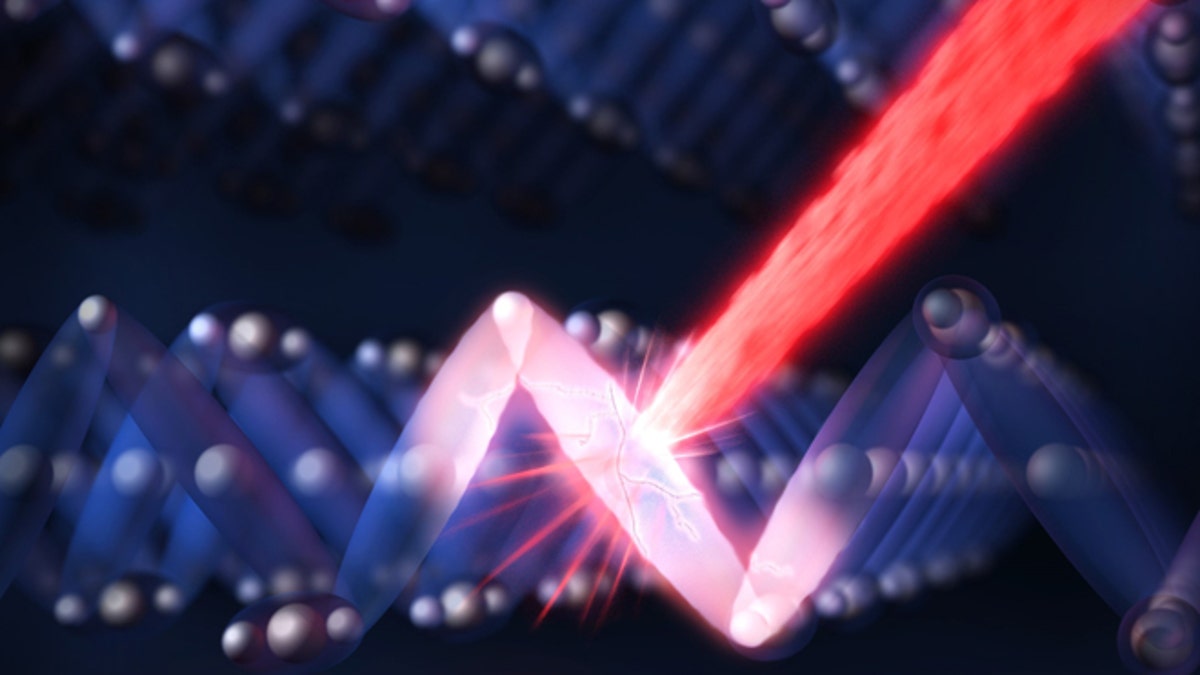
An optical laser pulse (the red streak) shatters the ordered electronic structure (blue) in an insulating sample of magnetite, switching the material to electrically conducting (red) in one trillionth of a second. (Greg Stewart/SLAC)
So long silicon! A small change in the design of a computer chip could soon lead to the creation of smaller, faster and far more powerful computers.
Researchers at the U.S. Department of Energy's SLAC National Accelerator Laboratory reported that magnetite, a naturally magnetic mineral -- the most magnetic of all the minerals on Earth -- was found to have the fastest-possible electrical switching time. Electrical switching, or moving a “switch” from a non-conductive state to a conductive one, is the process that makes our current electrical circuits.
The team of scientists used SLAC's Linac Coherent Light Source (LCLS) X-ray laser and found that that it takes only 1 trillionth of a second – thousands of time faster than current transistors – to flip the on-off electrical switch in samples of magnetite.
The findings were published July 28 in Nature Materials, a scientific journal.
According to Roopali Kukreja, the lead author of the study and a materials science researcher at Stanford University, this project unveiled the so-called “speed limit” for electrical switching in this material.
Researchers say that when the laser pulse struck the sample, the electronic structure was rearranged into non-conducting “islands” surrounded by electrically conducting regions, hundreds of quadrillionths of a second later.
First, scientists hit the samples with a visible-light laser, fragmenting the material's electronic structure at an atomic scale, which rearranged it and formed the islands. Following closely by an ultrabright, ultrashort X-ray pulse in adjusted intervals, they measured how long it took for the material to switch from a non-conducting to an electrically conducting state.
The magnetite samples were then cooled to -190 degrees Celsius, locking the molecular changes in place, according to Kukreja. Follow-up studies were conducted on a hybrid material that exhibits ultrafast switching properties at room temperature, making it more commercially viable than magnetite. Future experiments will attempt to identify other compounds and techniques to induce electrical switching, possibly creating superior transistors.
With a global search underway for new materials that go beyond modern semiconductor transistors, the LCLS x-ray could help hone in on processes that occur at the atomic size, according to Hermann Dürr, the principal investigator of the LCLS experiment and senior staff scientist for the Stanford Institute for Materials and Energy Sciences.
This experiment shows that although magnetite's magnetic properties have been known for thousands of years, there is a lot that can still be learned, notes Dürr.
